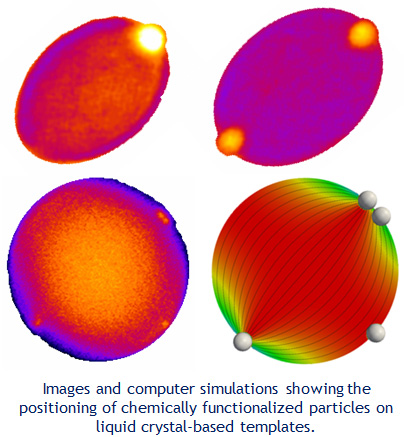 Non-Spherical, patchy particles can be synthesized using liquid crystalline templates
Non-Spherical, patchy particles can be synthesized using liquid crystalline templates
General Overview: Small spherical particles with uniform surfaces have important technical applications ranging from drug delivery to paint additives. Although non-spherical particles, and particles with patterned surfaces, have the potential to dramatically improve both the performance and range of applications of particle-based materials, the fabrication of such “patchy” particles has been difficult. A collaborative study between University of Wisconsin-Madison and University of Chicago, however, has now led to the discovery that liquid crystals (LCs), the same materials that have been used in LC displays for decades, can form the basis of versatile methods to synthesize non-spherical, chemically-complex particles. In particular, this team has used a combination of experiment and computer simulations to reveal that chemically diverse nanoparticles can be positioned at specific locations on the surfaces of LC droplets, and the LC polymerized to create chemically patchy and non-spherical particles.